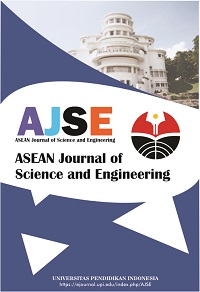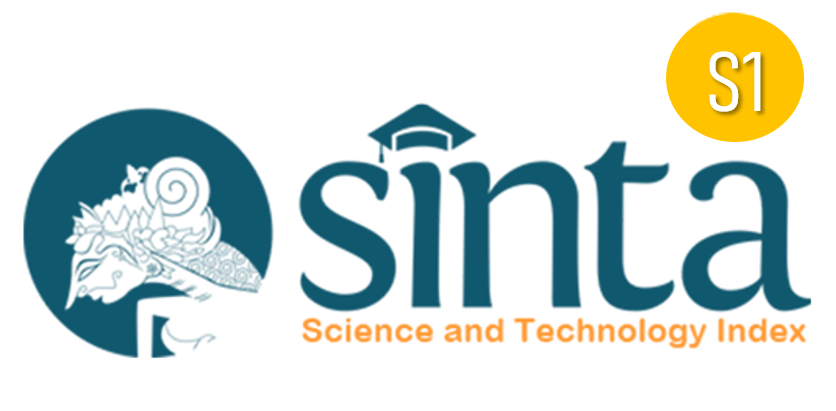Assessment of AQI, PM10, PM2.5, NO2, O3: The Case of Owo, Nigeria
Abstract
Keywords
Full Text:
PDFReferences
Abulude, F. O., Ndamitso, M. M., Iyaka, Y. A., and Abdulkadir, A. (2018a). Study of particulate matter of akure, Nigeria using a sharp-cut inertial filter combined with an impactor-a preliminary study. Journal of Atmospheric and Solar-Terrestrial Physics, 179, 396-404.
Abulude, F. O., Ndamitso, M. M., and Abdulkadir, A. (2018b). Environmental situation of an agricultural area in akure, Nigeria, based on physico-chemical properties of rainwater. Pollution, 4(2), 317-325.
Abulude, F. O., Damodharan, U., and Acha, S. (2021). Preliminary assessment of air pollution quality levels of lagos, Nigeria. Aerosol Science and Engineering, 5(3), 275-284.
Akinfolarin, O. M., Boisa, N., and Obunwo, C. C. (2017). Assessment of particulate matter-based air quality index in Port Harcourt, Nigeria. Journal of Environmental Analytical Chemistry, 4(4), 1-4.
Angaye, T. C., Oyinke, G. N., and Ogidi, O. I. (2019). Environmental and health risk assessment of particulate matter associated with sporting activities in Yenagoa metropolis, Nigeria. General Internal Medicine and Clinical Innovations, 4(3), 1-3.
Aquilina, N. J., Havel, C. M., Cheung, P., Harrison, R. M., Ho, K. F., Benowitz, N. L., and Jacob Iii, P. (2021). Ubiquitous atmospheric contamination by tobacco smoke: Nicotine and a new marker for tobacco smoke-derived particulate matter, nicotelline. Environment International, 150, 1-10.
Benchrif, A., Wheida, A., Tahri, M., Shubbar, R. M., and Biswas, B. (2021). Air quality during three covid-19 lockdown phases: AQI, PM2.5 and NO2 assessment in cities with more than 1 million inhabitants. Sustainable Cities and Society, 74, 1-21.
Croitoru, L., Chang, J. C., and Akpokodje, J. (2020). The health cost of ambient air pollution in Lagos. Journal of Environmental Protection, 11(09), 753.
Daful, M. G., Adewuyi, T. O., Muhammad, M. N., Oluwole, O. A., Dadan-Garba, A., and Ezeamaka, C.K. (2020). Assessment of the spatial relationship between air pollutants in kaduna metropolis, Nigeria. Journal Sustainable Development, 13, 204–223.
Jassim, M. S., and Coskuner, G. (2017). Assessment of spatial variations of particulate matter (PM10 and PM2.5) in Bahrain identified by air quality index (AQI). Arabian Journal of Geosciences, 10(1), 1-14.
Keshtkar, M., Heidari, H., Moazzeni, N., and Azadi, H. (2022). Analysis of changes in air pollution quality and impact of covid 19 on environmental health in Iran: Application of interpolation models and spatial autocorrelation. Environmental Science and Pollution Research, 29, 38505–38526.
Li, Y., Tang, Y., Fan, Z., Zhou, H., and Yang, Z. (2018). Assessment and comparison of three different air quality indices in China. Environmental Engineering Research, 23(1), 21-27.
Osimobi, O. J., Yorkor, B., and Nwankwo, C. A. (2019). Evaluation of daily pollutant standard index and air quality index in a university campus in Nigeria using PM10 and PM2.5 particulate matter. Journal of Science, Technology and Environment Informatics, 7(2), 517-532.
Sicard, P., De Marco, A., Agathokleous, E., Feng, Z., Xu, X., Paoletti, E., Rodriguez, J., and Calatayud, V. (2020). Amplified ozone pollution in cities during the covid-19 lockdown. Science of the Total Environment, 735, 1-10.
Xu K., Cui K., Young. L. H., Wang, Y. F, Hsieh Y. K., and Wan S (2020). Air quality index, indicatory air pollutants and impact of covid-19 event on the air quality near central China. Aerosol Air Quality Research, 20(6), 1204–1221.
Yang, S. Q., Xing, J., Chen, W. Y., Li, F., and Zhu, Y. (2021). Rapid Evaluation of the effects of policies corresponding to air quality, carbon emissions and energy consumption: An example from Shenzhen, China. Atmosphere, 12(9), 2-28.
Zaib, S., Lu, J., and Bilal, M. (2022). Spatio-Temporal Characteristics of Air Quality Index (AQI) over Northwest China. Atmosphere, 13(3), 1-22.
DOI: https://doi.org/10.17509/ajse.v4i1.51433
Refbacks
- There are currently no refbacks.
Copyright (c) 2022 Universitas Pendidikan Indonesia

This work is licensed under a Creative Commons Attribution-ShareAlike 4.0 International License.












